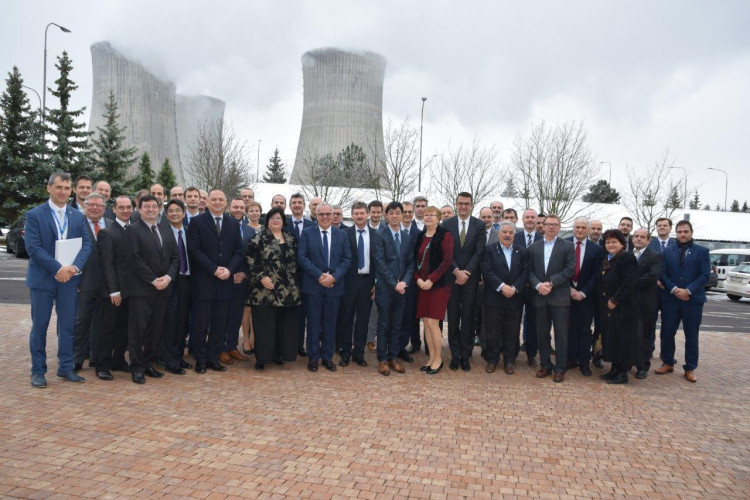An International Atomic Energy Agency (IAEA) team of experts observed a commitment to safety by the operator of Unit 3 of the Mochovce Nuclear Power Plant (NPP) in Slovakia ahead of the start of its commercial operation. The team also identified areas where further improvements can be made.
The Pre-Operational Safety Review Team (Pre-OSART) on 5 December concluded an 18-day mission to Unit 3 of the Mochovce NPP, which is located about 100 km east of the capital Bratislava. Slovakia is building two 471 megawatts electric (MWe) pressurized water reactors (PWR) and is operating two 470 MWe units at the site. Unit 3 is expected to be connected to the electrical grid next year. Slovenske Elektrarne, a.s. is the owner and operator of the NPP.
OSART missions aim to improve operational safety by objectively assessing safety performance using the IAEA’s safety standards and proposing recommendations and suggestions for improvements where appropriate.
“Before first starting up a new nuclear power plant, senior managers need to continuously demonstrate commitment to safety and engage employees at every level in this effort, and the Pre-OSART team has observed such a commitment,” said Team Leader Fuming Jiang, Senior Nuclear Safety Officer in the IAEA’s Operational Safety Section. “The team also offered recommendations and suggestions to further improve the plant’s operational safety performance.”
The 17-member team comprised experts from Brazil, Canada, China, the Czech Republic, Finland, France, Germany, Hungary, Romania, the Russian Federation and the United Kingdom, together with two IAEA staff members and observers from Austria, Italy and the Russian Federation.
The review covered the areas of leadership and management for safety; training and qualification; operations; maintenance; technical support; operating experience; radiation protection; chemistry; emergency preparedness and response; accident management; human, technology and organizational interactions; and commissioning.
The team identified several good performances that will be globally shared with the nuclear industry, including:
- The plant has implemented a novel safety system to cool the reactor even when shutdown.
- The plant has developed and uses an online tool to support event classification and prognosis, in case of emergencies.
- The plant has adopted an effective way of communicating with external organizations and interested parties to improve the awareness of nuclear power.
The mission made several recommendations to improve operational safety, including:
- Plant managers should set high standards and expectations for plant operation and ensure they are rigorously applied.
- The plant should fully develop and implement an integrated and strategic approach to support safe commissioning of the plant.
- Plant managers and supervisors should always ensure the safety of personnel and equipment by fostering appropriate behaviour and conditions, such as when staff are working at height.
“This mission provided valuable feedback, which will help us further improve the commissioning process and increase operational efficiency and safety of our new units. We will implement all proposals and recommendations of the Pre-OSART experts, and I believe that we will achieve our objective of becoming one of the best operators of VVER (water-water energetic) reactors in the world,” said Branislav Strycek, Chairman of the Board and CEO of Slovenske Elektrarne, a.s.
The team provided a draft mission report to the plant’s management. Plant management and the Nuclear Regulatory Authority of the Slovak Republic, which is responsible for nuclear safety oversight in the country, will have the opportunity to make factual comments on the draft. These will be reviewed by the IAEA, and the final report will be submitted to the Government of the Slovak Republic within three months.
The plant management said it would address the team’s proposals to improve operational safety and request a follow-up OSART mission in about 18 months.
Background
General information about OSART missions can be found on the IAEA website. An OSART mission is designed as a review of programmes and activities essential to operational safety. It is not a regulatory inspection, nor is it a design review or a substitute for an exhaustive assessment of the plant’s overall safety status.


